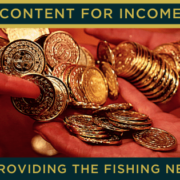How do I structure my blogs so they get my message across?
So many people say “I can’t write” as a reason not to blog. One of the great things about blogging is that it’s a personal expression, so it doesn’t need to be ‘perfect.’ That said, you do need to structure your blogs so they’re easy to read and follow by your audience, so this article will share with you some hints and tips to help.
(If you want more, we have a whole series on How to Write with lots more hints and tips.)
Rule 1 – there are no rules
First and foremost, I want to make it clear that there are no fixed rules here. This brief guide should give you some basis to structure your blogs, though. Use this to make a start. Rest assured you’ll soon develop your own style after getting into the swing of writing.
The key to developing a good style is consistency and sustainability. Make sure that whatever you plan, it’s possible to do it every time you blog based on the regular timetable you’ve set for yourself. Making long term plans helps out too: for instance, this series of articles on the topic of blogging was planned before the first one was published.
That’s not to say that if inspiration suddenly hits me, I can’t write about something different, but the plan makes sure I cover the key points and don’t repeat myself.
Blogs do not have to be long. My go-to length is around 500 words. Much longer and people won’t have time to read or engage with them. If they’re much shorter you may not be giving enough detail. That said, I’ve seen some very short blogs which were incredibly insightful. As I said before – no hard and fast rule!
The Pyramid Principle
The actual structure of your blog can vary and is all down to personal preference. I like to use Barbara Minto’s Pyramid Principle. In this you have:
- Situation – this is a fact or a statement as an opener which is important to your reader. It should immediately engage them and be related to a topic that’s in their mind. In this blog that’s: ‘I can’t write’.
- Complication – why this situation needs attention. This part should let the reader know why they should care about the topic in question. Up above, I’ve said ‘blogs need to be easy to follow and understand’.
- Question and answer – the question is often silent, but not always. The answer to this is your main thought or idea for the article. ‘Here are some great tips to help you.’ One trick here might be to make the question the title of your blog. After all, that’s what someone might type into a search engine isn’t it?
- Three or four key lines that back up the main thought – each of these key lines can break down into three of four sub-ideas. This is where the pyramid comes from. I’ve mentioned blog planning, length, and structure as my key lines.
I don’t use this structure religiously. You’d struggle to track every aspect of it in my blogs, but it’s always a good thing to refer back to if I need more ideas. It also helps if I find myself deviating from the topic or rambling too much.
A good structure is imperative if you want to promote your blog properly. A clear series of ideas and sub-ideas allows you to easily extract elements for social media so your followers know what to expect when they click on an article. Use of key lines also helps with google searches, so random people can more easily stumble across your work.
Whichever method you make use of to structure your blogs, remember to keep it consistent, easily manageable, and to a regular timetable.
If writing just isn’t your thing but you’d still like to have a blog, we’ve got you covered. Our team of talented blog writers can create and implement regular and impactful content for you that speaks directly to your target audience – get in touch to find out more about our regular blogging services.












Leave a Reply
Want to join the discussion?Feel free to contribute!